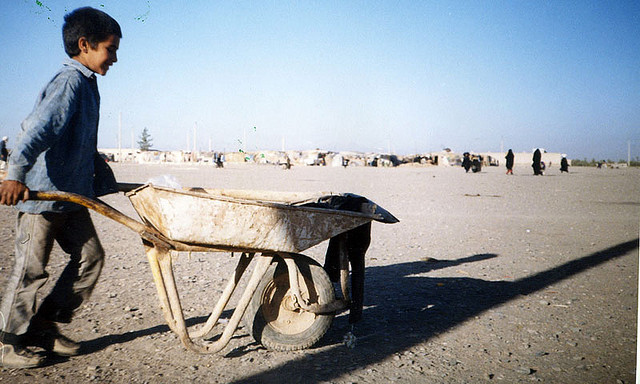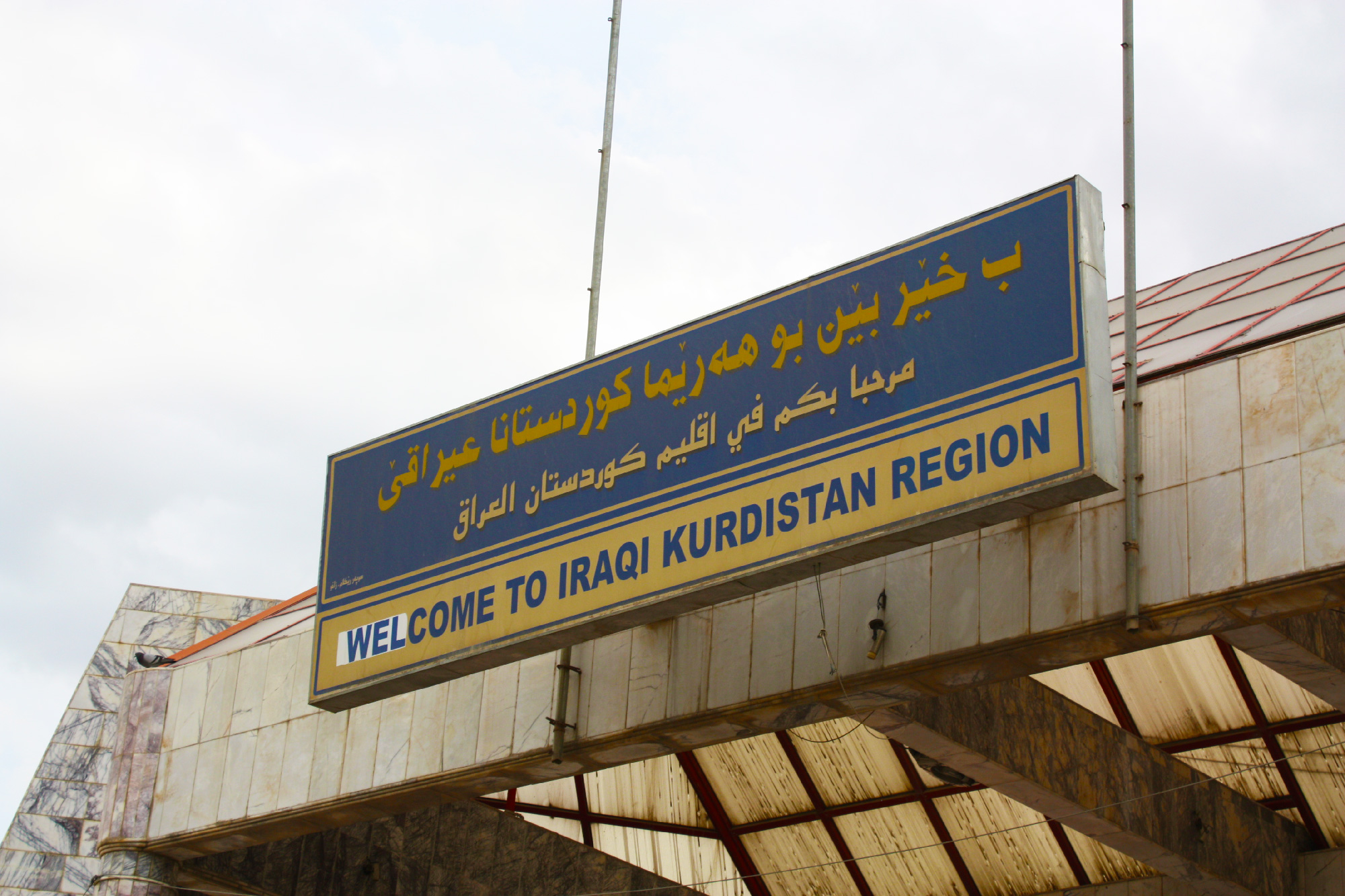Many Iraqis face certain danger from armed militias and terrorist groups if they work for the American military or contractors. These groups threaten, hunt down, torture and kill Iraqis whom they know or suspect have worked for Americans. Realizing this heinous trend, the US made it easier for Iraqis to come to America. In 2007 Congress passed the Refugee Crisis in Iraq Act (“Kennedy Act”), which was signed into law in January of 2008. The goal of the Act was to pay our moral debt to the Iraqis who worked for Americans at great risk to their personal safety. The Act expanded which Iraqis are eligible for Priority 2 (P2) visas, allows for in-country processing for these visas, and also created 5,000 Special Immigrant Visas (SIVs) each year for five years including 2008. Unfortunately, the SIV program has yet to become a viable route for imperiled Iraqis to access safety. The SIVs created by the act are rarely used, and neither the SIV nor P2 process offer Iraqis a quick route to safety. Certainly, the US has made admirable progress in admitting Iraqis as refugees—the Bureau of Population, Refugees, and Migration admitted 18,838 Iraqi refugees in FY2009 alone. But in the same period, the US issued only 1,416 of the 10,000 SIVs available—just 14% of the assistance it planned to offer The Kennedy Act has fallen far short of its goal of granting 5,000 Iraqi SIVs per year—but why?

There are two primary reasons. First, the application process is confusing, arduous, and nearly impossible to discover unless one has prior knowledge of it. Second, the entire application hinges on whether or not the applicant’s former supervisor responds to an employment verification e-mail. Both of these problems are symptoms of the lack of American preparation in designing and implementing the act—the Bush Administration had no idea how many Iraqis would qualify or apply for the SIV. At a 2008 briefing, the US Senior Coordinator for Iraqi Refugee Issues — the American responsible for knowing all the answers to questions about American policy with Iraqi Refugees—told reporters that the US Government “can’t gauge what the demand is going to be for Special Immigrant Visas”; when pressed for a figure he quipped that the number he gave was “a real guesstimate.” The low utilization of the SIV is not because few people qualify for it; some estimate that there are 150,000 Iraqis who qualify for an SIV.
The most significant problem of the SIV program is that it is not accessible. Quite simply, Iraqis rarely know about the SIV program even if they qualify for it. In the labyrinthine process of US immigration visas, the description of the SIV is difficult to locate—even for an English-speaking, internet-savvy American who knew the exact search terms for the “Special Immigrant Visa.” The process becomes less muddled once the correct document is located—there are tens of pages on various government websites describing the process, not all of which make it clear whether they are describing the P2 or SIV process. But that assumes the person searching can read enough English to locate the website; Arabic translations of the relevant documents are hidden behind a small English-language link. At least one page on the US State Department website says that the SIV program is not yet implemented, when in fact implementation took place two years ago. Furthermore, the Act’s internet-centered approach—an applicant must e-mail a State Department e-mail address to apply—makes specious assumptions about access to the internet in Iraq. According to one 2008 survey, only 1 in 100 Iraqis have internet. The SIV could plausibly be written “Savvy Internet-user Visa.”
Then there is the problem of the actual SIV application. Application is a deceptive term for the disaggregated series of document-gathering, form-filling, and correspondence via e-mail and mail that an SIV petition entails. Whereas the paperwork for the P2 refugee application is largely assembled and completed by the International Organization for Migration (IOM), the SIV applicant shoulders the brunt of navigating the complex English-language process. One attorney remarked that it seems as though each SIV application “goes into a black hole” rather than to the National Visa Center for processing. The application requires the assembly of countless specific documents sent to various locations at different times, all of which require certified translations and information that many Iraqis lost when they fled their homes. Many cannot risk their lives or their refugee status and return to Iraq to gather documents for an SIV application—especially because returning to the country one fled from can void a P2 resettlement application.
A second problem with the Kennedy Act is procedural: the process requires the applicant’s former supervisor to voluntarily cooperate with the US or its contracting partners to determine an applicant’s eligibility. Normally, a refugee registers with the United Nations High Commissioner for Refugees (UNHCR) and gets a referral to the US to be resettled. But the drafters of the Kennedy streamlined the procedure—an SIV applicant need not apply through UNHCR or even be a refugee at all.
But it is the first step of applying for an SIV can permanently delay the petition. A petitioning Iraqi must produce a “positive recommendation” from their supervisor, and the IOM must be able to verify the employment via e-mail. When this system works, it works well: a supervisor promptly responds to the employment verification request and the application proceeds. But sometimes e-mails go unanswered. Sometimes, a supervisor, due to a personal grudge, refuses to recommend an Iraqi. Or perhaps a company operating in Iraq did not keep accurate records of who it employed, and simply cannot verify the employment. In practice, wagering an entire visa application on one person’s ability to respond to an e-mail introduces an unacceptable variability into the process. An Iraqi who may be killed for working with Americans should not have his visa processing indefinitely delayed or denied because an e-mail ended up in a spam folder.
Furthermore, the organization charged with verifying employment—the IOM—has, in at least one case, assumed that an initial lack of response justified closing an SIV case file. This writer prepared the case of an Iraqi who the IOM rejected when attempts to verify his employment via e-mail went unanswered. Four months and ten e-mails later, this writer was able to verify his employment, so he reopened his SIV petition. It is far too easy to send off an e-mail, not receive a timely response, and conclude that an SIV application cannot proceed. There must be an established, public set of procedures to resort to when employment verification stagnates. It is regrettable that an Iraqi’s petition can permanently fail—with no process to appeal—simply because one supervisor failed to respond to an e-mail requesting employment verification.
Fortunately, these major issues—accessibility, employment verification, lengthy security checks, and convoluted application process—can be corrected. The lack of accessibility can be addressed by circulating Arabic-language documents to increase awareness of the SIV program and establishing procedures other than e-mail through which to apply. Employment verification would be easier if the US Government required its contractors to respond to SIV petitions, and notified supervisors that only gross violations of the “faithful and valuable service” test can exempt an Iraqi from the visa. There ought to be a centralized administrator who ensures that SIV security checks do not linger in interagency limbo, rather than the current decentralized process that can take months, during which an Iraqi is not informed of the status of his application—having a common name shared by an undesirable might add months of unnecessary waiting. The most difficult to correct is the application process, the complexity of which is both a blessing and a curse: its staggered nature allows an Iraq to file a petition without certain documents, knowing that he or she can gather them later, but its numerous steps make it intimidating and difficult to navigate without fluent English. But the documentary requirements are a strong disincentive to apply—especially because some Iraqis cannot return to retrieve documents required for an SIV petition.
The Kennedy Act is an important, if imperfect, step forward. The P2 program has been widely successful, and Iraqis are resettling to the United States through refugee programs in record numbers—the US admitted 18,838 Iraqi refugees from P2 and other referrals in FY2009 alone.
The Kennedy Act moves away from the traditional idea that crossing an international border is an essential part of becoming a refugee and qualifying for international humanitarian aid. The P2 process, by circumventing the UNHCR requirement that one must first leave their country, acknowledges what international refugee policy does not: internally displaced persons (IDPs) do not deserve less protection simply because they did not cross a line in the sand. That refugees can only exist after crossing a border is an idea becoming outmoded by the proliferation of intrastate conflicts where millions of people, for reasons as varied as the terrors they endure, do not leave their country but otherwise qualify as refugees in need of international protection. The P2 process is unique for offering resettlement, a privilege typically reserved for refugees, to IDPs.
But the failures of the SIV program overshadow the successes and threaten to undermine the American mission in Iraq. If we do not protect our own, we cast doubt on our moral convictions—not a great way to win hearts and minds. If we cannot implement a visa regime properly, we will not be expected to fare any better at regime change. If we do not give Iraqis an incentive to work for and with American forces, we risk undermining the tenuous security in Iraq—which cannot succeed without Iraqis working alongside Americans. By offering a largely unworkable visa, we simultaneously renege on our debt to Iraqi allies and offend a central component of the American promise: hard work will be rewarded.
________________________
“Employment-Based Visas,” March 20, 2009, http://travel.state.gov/visa/immigrants/types/types_1323.html#fourth.
“International Telecommunication Union – BDT,” http://www.itu.int/ITU-D/icteye/DisplayCountry.aspx?countryId=244.
Office of Admissions – Refugee Processing Center, “Summary of Refugee Admissions” (Bureau of Population, Refugees, and Migration), http://wrapsnet.org/LinkClick.aspx?fileticket=KLZ%2fgQP7JZ0%3d&tabid=211&mid=630&language=en-US.
Promises to the Persecuted: The Refugee Crisis in Iraq Act of 2008 (Human Rights First, April 2009), http://www.humanrightsfirst.org/pdf/090428-RP-iraqi-progress.pdf.
US Department of State, “Briefing on Developments in the Iraqi Refugee Admissions and Assistance Programs,” http://2001-2009.state.gov/p/nea/rls/rm/109568.htm.
US Department of State – Visa Office, “Table IX: Special Immigrant Visas Issues Fiscal Year 2009,” http://www.travel.state.gov/pdf/FY09AnnualReport_TableIX.pdf.



